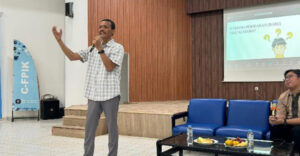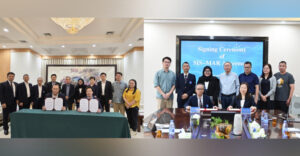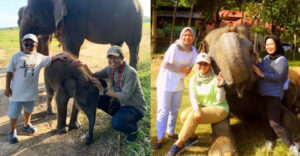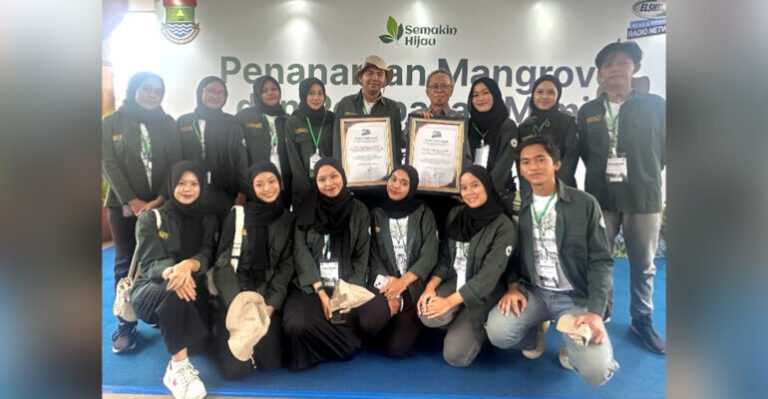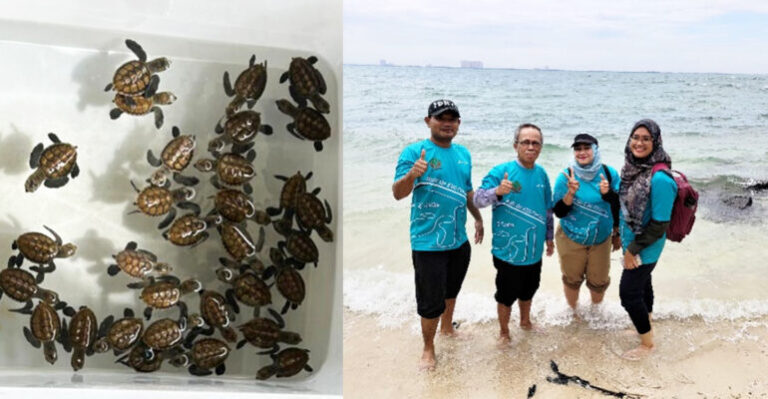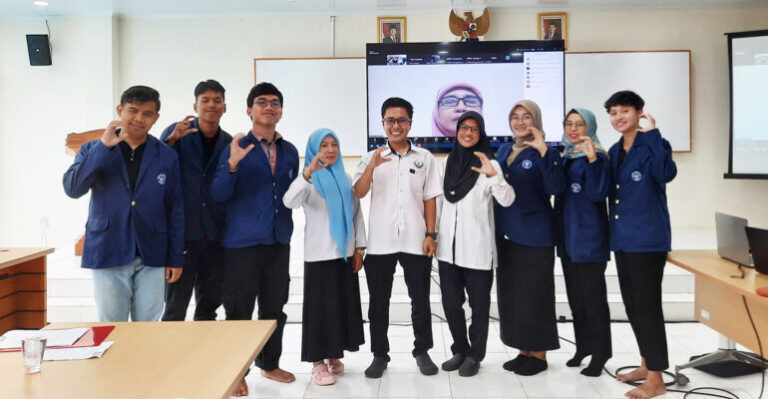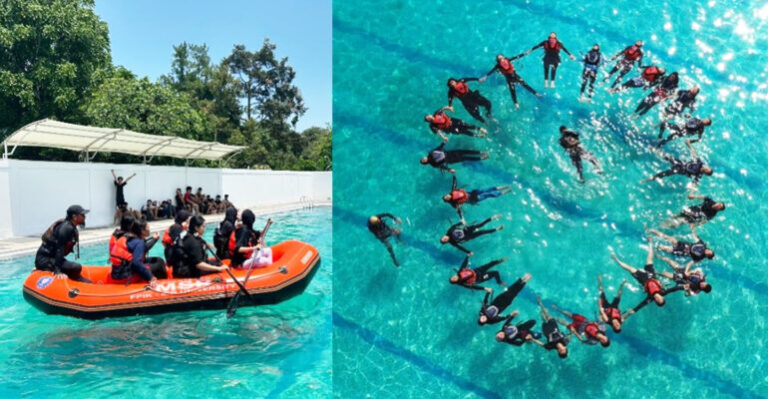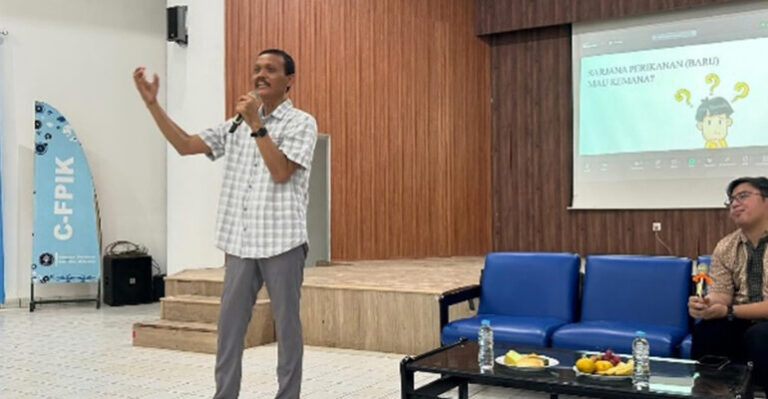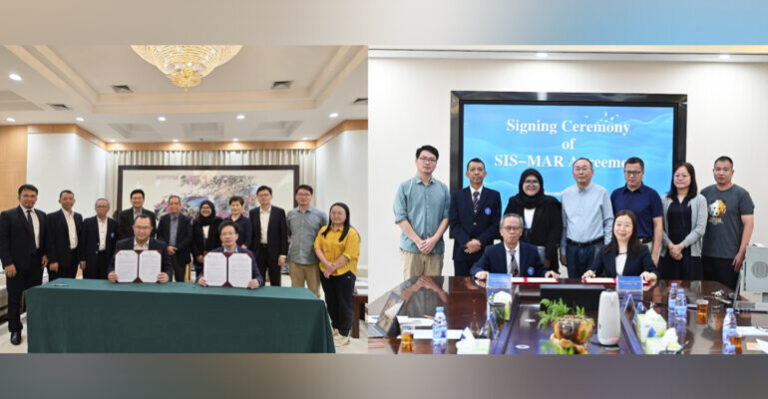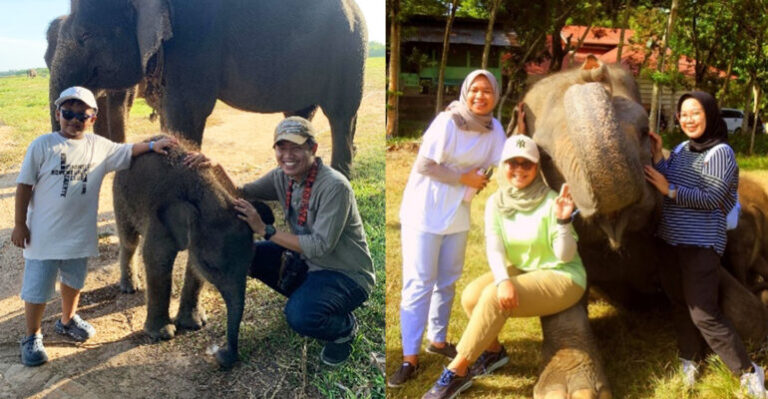Himasper IPB University Holds a Talkshow Themed Managing Aquatic Resources as Blue Carbon Asset

Aquatic Resources Management Student Association (Himasper), Faculty of Fisheries and Marine Sciences (FPIK) IPB University held a 2023 Indonesia Water Festival Talkshow. With the theme ‘Managing Aquatic Resources as Blue Carbon Asset’, the Himasper mega project was held at the Andi Hakim Nasution Auditorium, IPB Campus Dramaga, Bogor.
The Dean of FPIK IPB University, Prof. Fredinan Yulianda, on this occasion said that blue carbon is a topic that is currently being discussed frequently. Blue carbon is closely related to human activities, one of which is industrial activity. Industrial activities can cause an increase in the level of carbon concentrations, both in the air and in the waters.
“Carbon has positive and negative sides. Carbon can be utilized and can also cause natural imbalances. Therefore, various appropriate roles are needed from all parties, both from the government, academics, practitioners and the community so that an integrated management system can be achieved optimally,” he said.
Blue carbon is a term known for reserves of carbon emissions absorbed, stored and released by coastal and marine ecosystems. Until now, ecosystems considered as blue carbon ecosystems include mangrove, sea grass and tidal swamp ecosystems. Coral reef ecosystems are still not included in the blue carbon category because the absorption and release of carbon in coral reefs are still considered the same, so nothing is stored in their bodies so further research is still needed.
Mangrove and seagrass ecosystems have the greatest ability to absorb carbon. Even seagrass absorbs 35 times the speed of carbon absorption compared to terrestrial. However, these two ecosystems face a high threat of damage. About 60 percent of existing mangroves have experienced degradation. Likewise, sea grass continues to decline.
This is a particular challenge in managing blue carbon ecosystems. Existing governance is considered insufficient, especially with regard to mangrove ecosystems. Even so, currently the Ministry of Environment and Forestry (KLHK) of the Republic of Indonesia is preparing regarding the protection and management of mangrove ecosystems.
In addition, other regulations in the Zoning Plan for Coastal Areas and Small Islands (RZWP3K) have introduced coastal ecosystem zones or also known as blue carbon zones. Mangrove areas that are not included in forest areas will be protected in regional regulations so that the use of mangroves is limited. On the other hand, in managing mangroves, it is not only the species that are protected, but also their habitat as a living space, so they should not be disturbed.
The current challenge is that there is still debate between economic and ecological aspects. If later the community protects the mangroves, then what will they get? This is also related to buying and selling carbon.
Carbon trading is classified into two categories, namely crediting (carbon crediting) and cap and trade (emission trading). The World Bank has allocated funds of 320 billion for East Kalimantan as an effort to reduce emissions.
Present as resource persons were M Yusuf, SHut, MSi (Director of Management and Utilization of Coastal and Small Islands, Ministry of Maritime Affairs and Fisheries/KKP), Ir Inge Retnowati, ME (Director of Inland Waters and Mangrove Rehabilitation, KLHK) and Muhammad Imran Amin ( MER Program Director, Nusantara Nature Conservation Foundation). The talkshow moderated by Dr. Fery Kurniawan, (MSP Lecturer) was also attended by and Prof. Hefni Effendi (Head of the MSP Department IPB University)
Sources: IPB News





